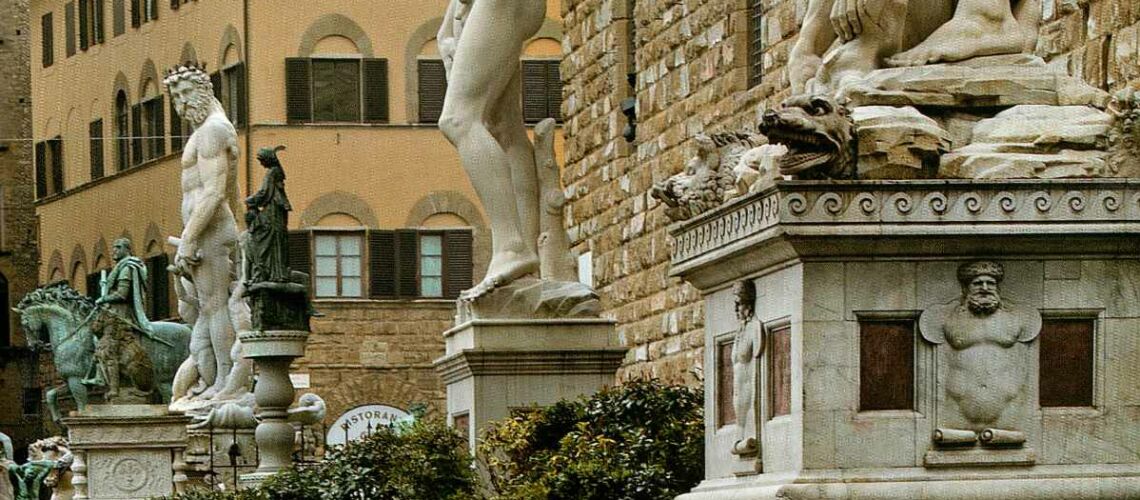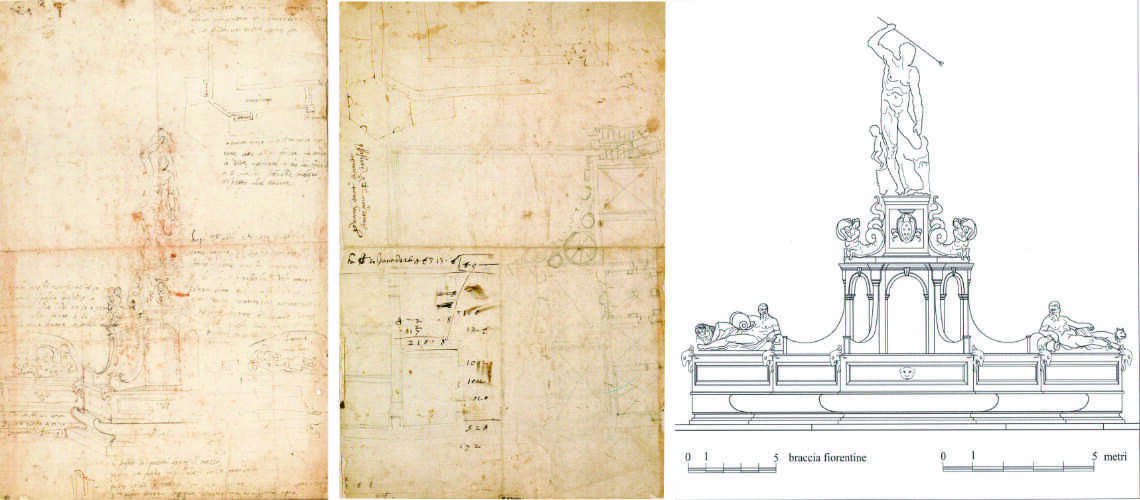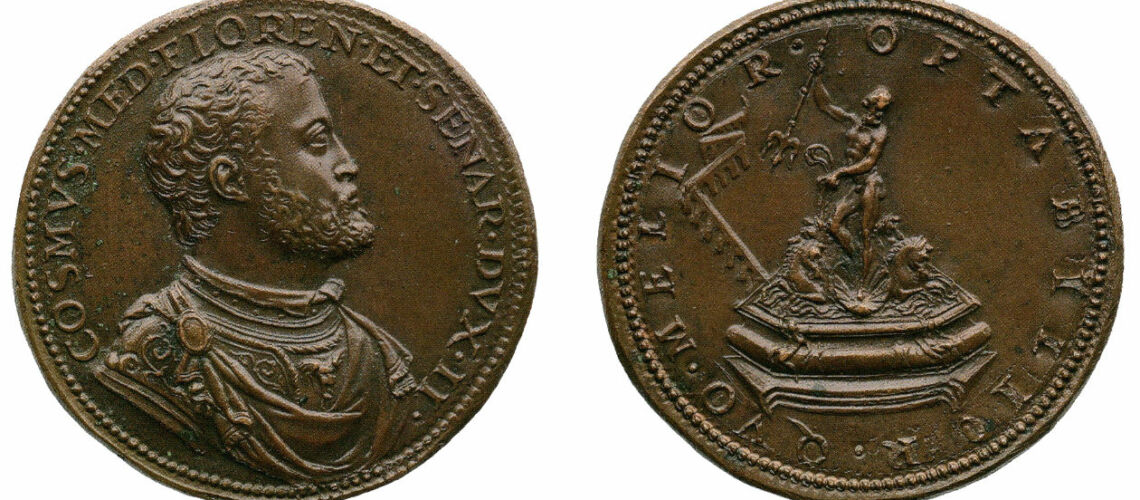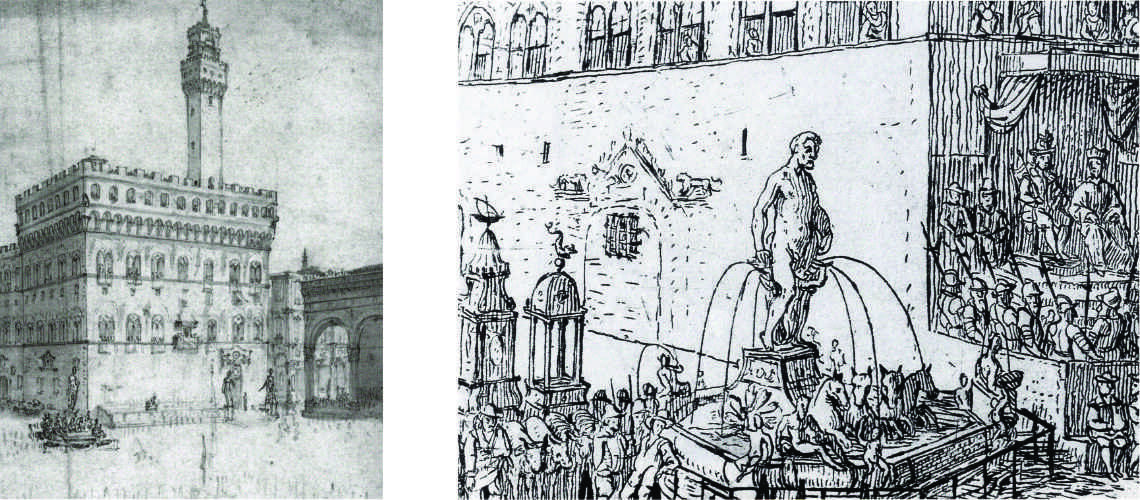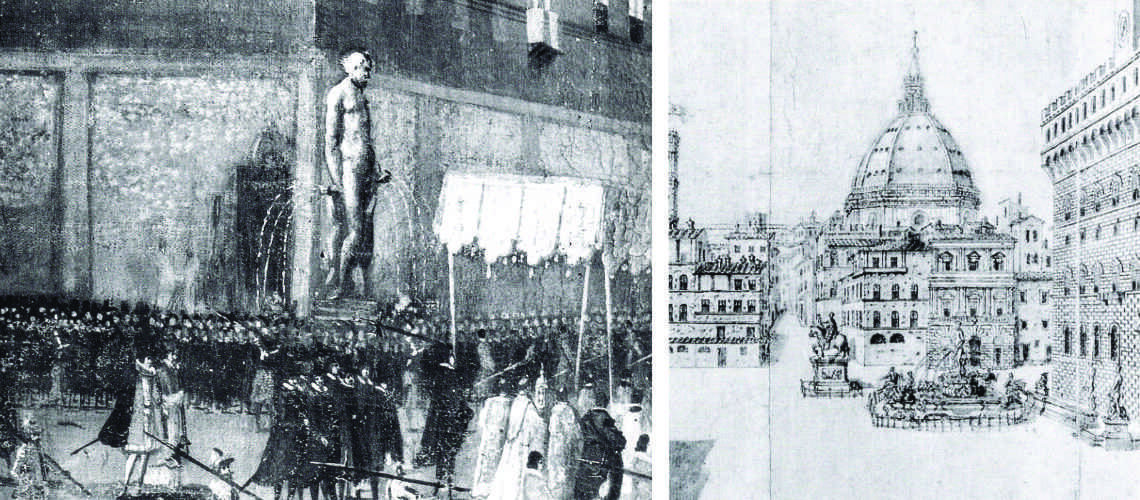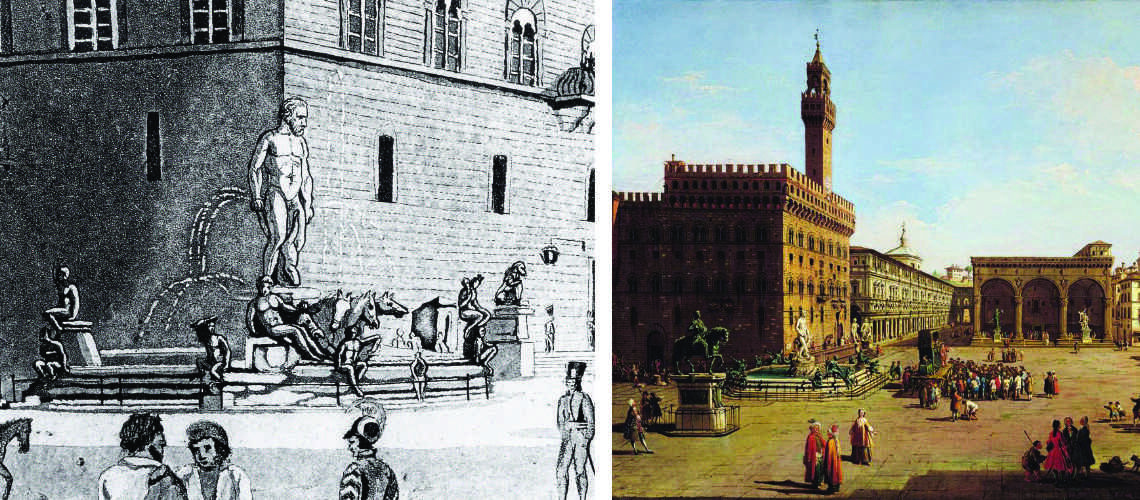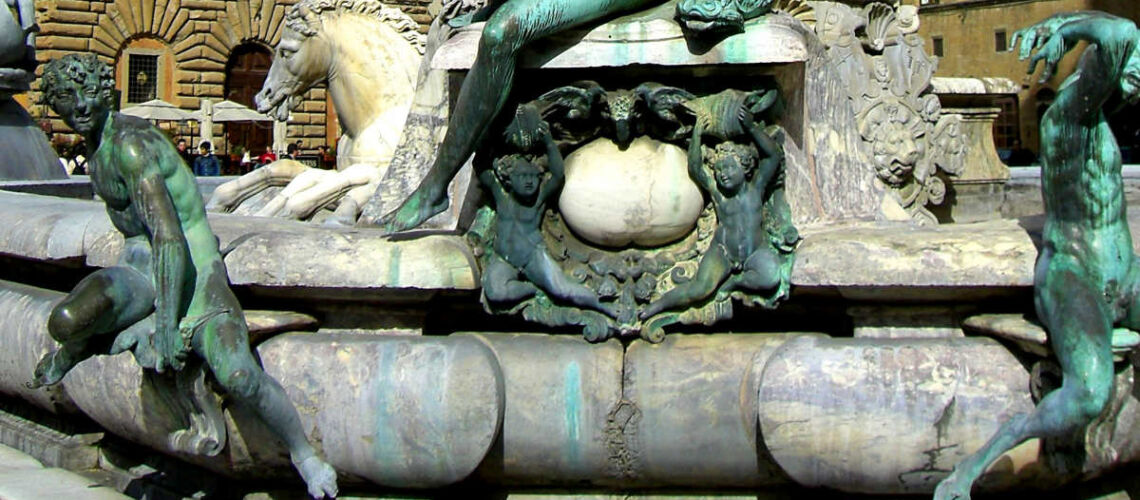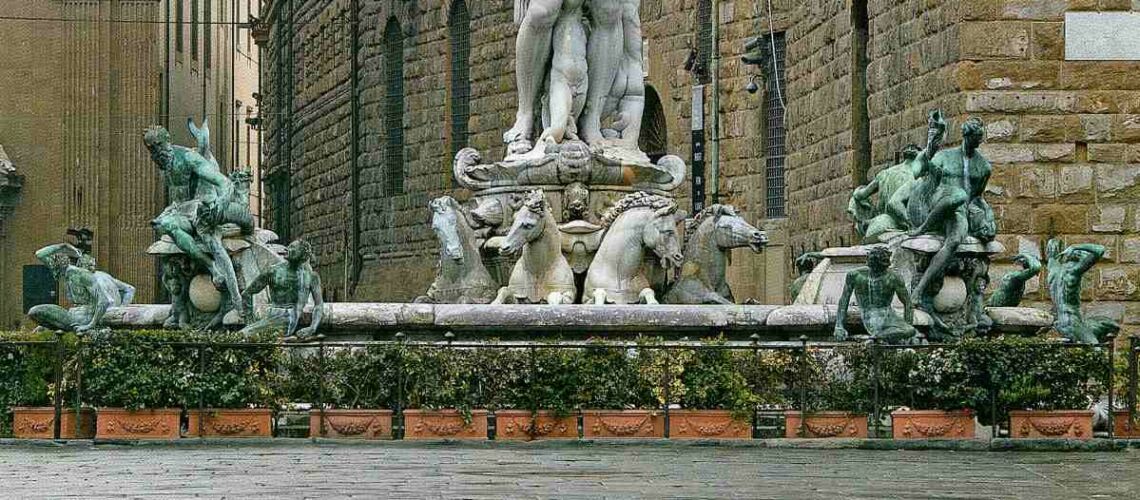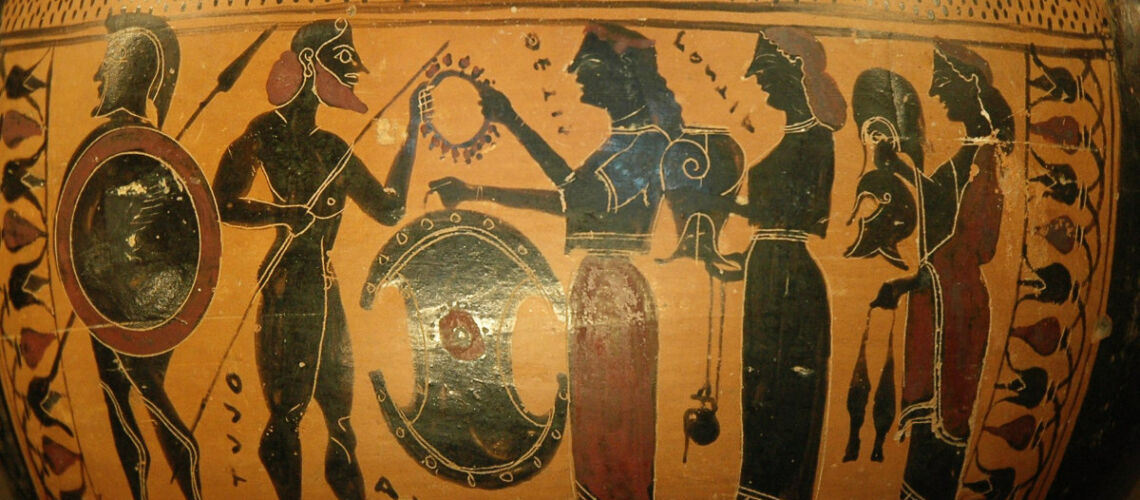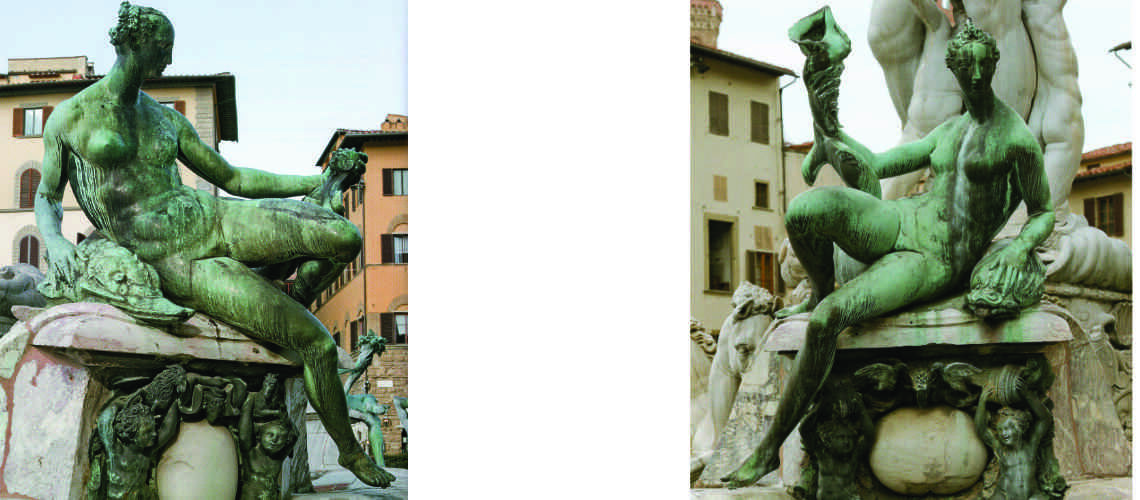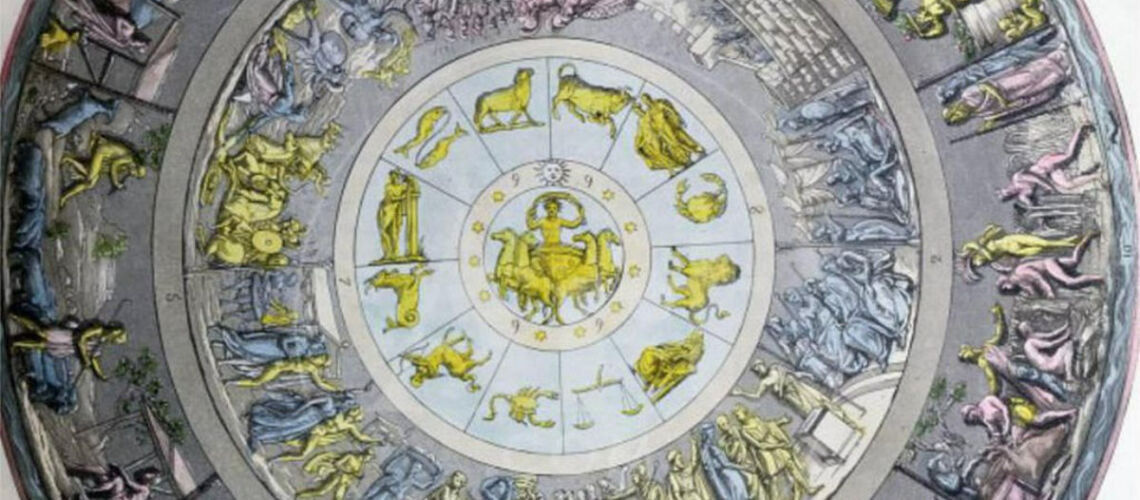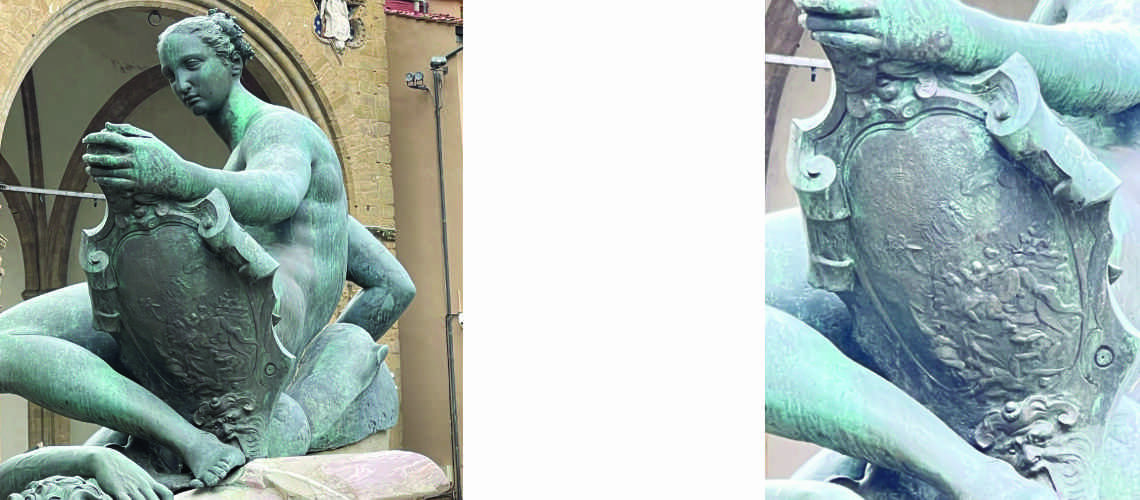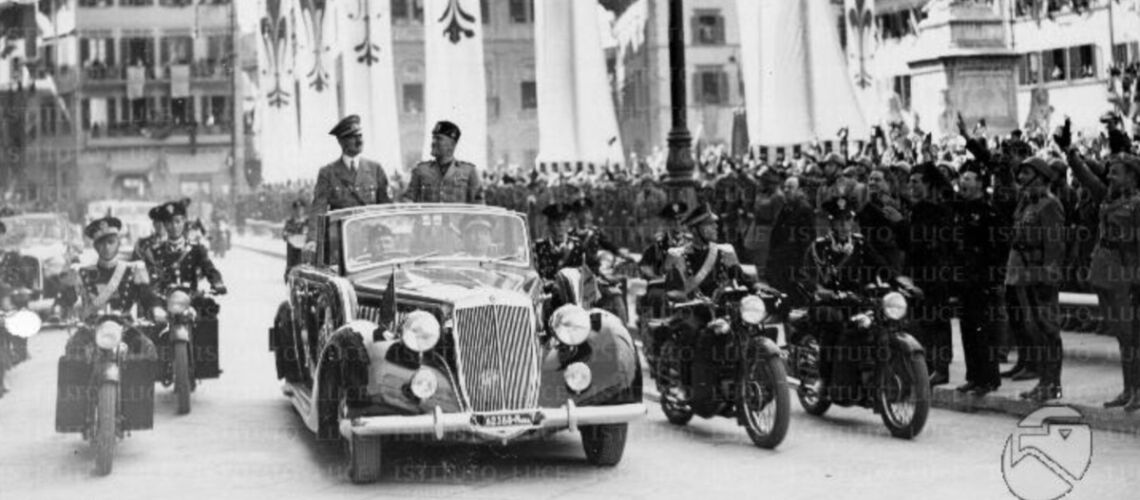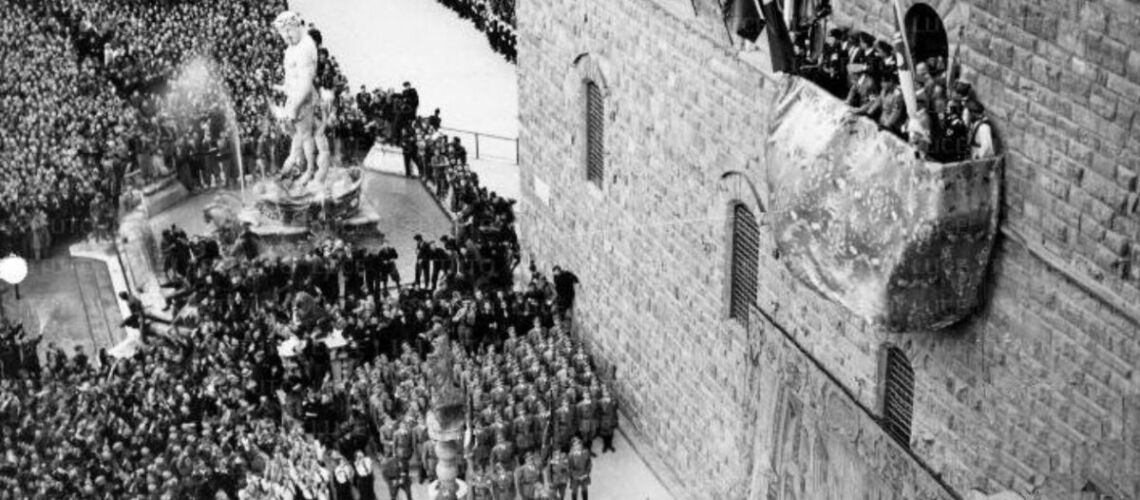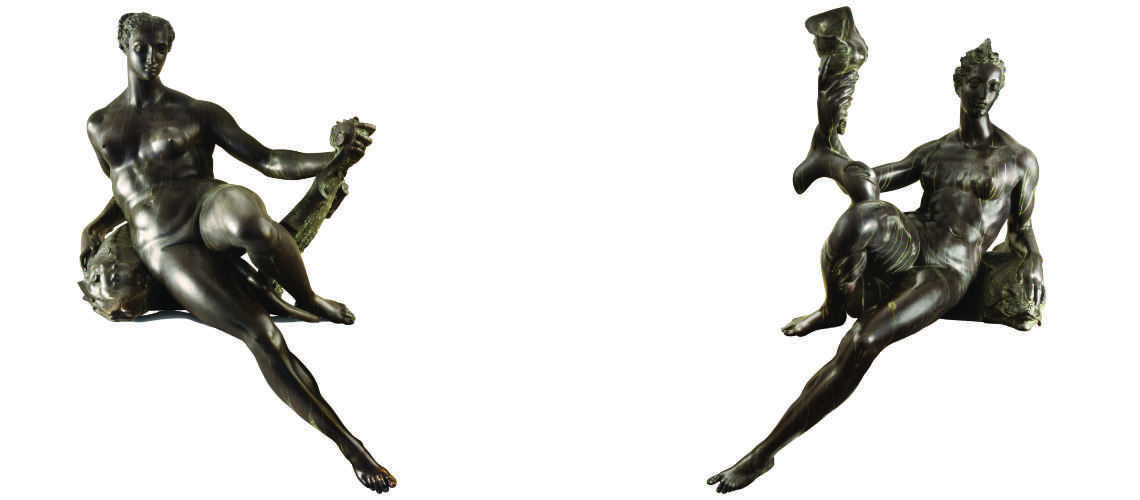The Fountain of Neptune in Piazza Signoria and the bronze "Naiads"
Duke Cosimo I had commissioned the construction of the Biancone fountain at the north-east corner of Palazzo Vecchio, so that the central figure of Neptune would be in line with the other large statues of Michelangelo’s David and Hercules and Cacus of Bandinelli.
Piazza della Signoria, Firenze
The project for a fountain in Piazza della Signoria is mentioned for the first time in a letter from Bandinelli to Jacopo Guidi dated March 1550.
In 1559 Vasari went to Rome and proposed Ammannati’s project to Michelangelo, in which Neptune has his arms raised.
| Anonymous, project for the Square’s Fountain, 1560, Louvre, Recto | Anonymous, project for the Square’s Fountain, 1560, Louvre, Verso | Reconstruction of the project for the Square’s Fountain from the anonymous drawing in the Louvre |
As can also be seen on a medal by Pier Paolo Galeotti from 1565 relating to the project for the fountain, Neptune actually has his arms raised.
Cosimo I medal, Pier Paolo Galeotti, 1556-1567, Bargello Museum
With Michelangelo’s consent it was easy to convince Cosimo I to assign the task of the fountain to Ammannati (also because Bandinelli had died in 1560) who gave a quick look at Cellini’s project but without even looking at the projects of other competitors such as Giambologna, Danti (and perhaps Vincenzo de’Rossi and Simone Mosca).
The marble Neptune was executed with his arms lowered: even so Ammannati did not sculpt it in a single block but several parts of marble joined together.
| Jacques Callogt, Piazza della Signoria, 1617, Hessisches Landesmuseum, Darmstadt, detail | Jacques Stella, etching, The Fountain of Neptune, 1621, detail, Uffizi |
| Anonymous, The Fountain of Neptune, early 17th century. Pitti Palace deposits, detail | Anonymous, drawing, view of Piazza Signoria, 17th century |
| Lasinio, engraving, view of Piazza Signoria, 17th century | Giuseppe Zocchi, Piazza della Signoria, first half of the 18th century |
Cosimo I wanted most of the basin and the marble decorations to be done with the “Mischio di Seravezza” marble with violet inclusions, a quarry of his exclusive property and use.
The bathtub in “Mischio marble” from Seravezza
Four bronze figures were placed at the four corners of the marble basin, two Satyrs and two Naiads (in reality they are Nereids, nymphs of the sea); and in fact Domenico Mellini (1566) speaks of Nereids, Raffaello Borghini (1584) writes that “the two females” were depicted for Thetis and for Doris.
In fact, Thetis has a shield as her attribute, with reference to her gift that she gave to her son Achilles. The attributes of the other Nereid (Doris), in addition to the dolphin, a buccina and a queen’s diadem, identify her as Amphitrite, wife of Neptune and therefore queen of the sea.
The fountain of Neptune, Piazza della Signoria, Firenze
Attic black-figure hydria, Thetis giving Achilles the shield made by Hephaestus, 575-550 BC, Louvre
| Thetis | Doris |
They are mannerist reworkings of the two marine deities whose proportions seem to draw inspiration from the school of Fontanebleau, of which many engravings were widespread at the time of Ammannati: in particular, the famous shield of Achilles described by Homer in the Iliad is wholly symbolic, in fact it presents a battle generic in bas-relief conducted with rapid style, of great spontaneity and in some places just mentioned.
Drawing of Achilles’ shield according to Homer’s description (Iliad, XVIII, 478-608)
| Thetis with shield | Thetis, detail of the shield |
If in the past the execution of the two Nereids, later renamed “Naiads”, had been attributed to various mannerist sculptors, and in particular to Giambologna, critics have long since attributed them to Ammannati, as well as the two Satyrs.
The replicas of the Ferdinando Marinelli Artistic Foundry
For Hitler’s visit to Florence in 1938, cleaning and restoration interventions were ordered, in particular of the bronzes present in Piazza Signoria, followed by podestà Paolo Venerosi Pesciolini and cared for by the municipal architect Alfredo Lenzi. They were thus cleaned up by Ferdinando Marinelli Sr., founder of the homonymous Artistic Foundry; on that occasion Marinelli asked and obtained permission to make negative moulds directly on the originals.
Those moulds then passed to his nephew Ferdinando Marinelli Jr. thanks to whom the identical copies of Ammannati’s “Naiads” exhibited in the Bazzanti Gallery on Lungarno Corsini were made.
Hitler’s visit to Florence, Piazza S. Croce
Hitler’s visit to Florence, Piazza Signoria
Replica of the two Naiads cast by the Ferdinando Marinelli Artistic Foundry, on sale at the Bazzanti Gallery in Florence
Catalogue: Naiad with shield – Naiad with horn of plenty

